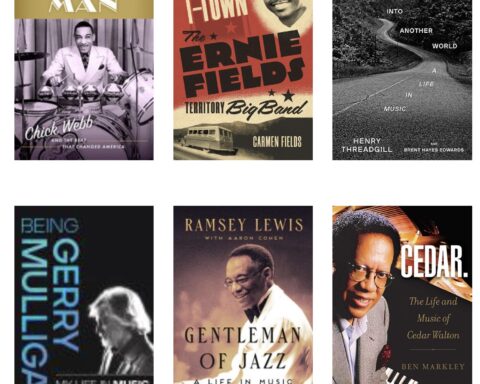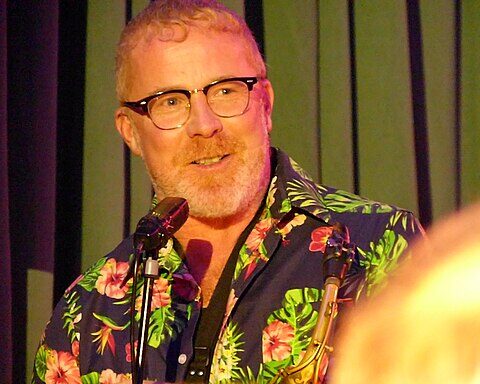By Fradley Garner
COPENHAGEN — It’s fun to read aloud. In my last 30 years as an active freelance journalist in Denmark, I narrated some 500 commercial and documentary films in English, most of them for Danish and international companies. My marginal income tripled.

Most of these gigs took less than an hour in a sound studio. For a closer-to-my-heart documentary this summer, I did an on-camera reading in the open upstairs living room of Erik Moseholm, a distinguished Danish musician, composer, author and educator, who turned 82 this May. He started on bass at age 14 and was voted Danish Jazz Musician of the Year 1958.
Erik has recorded with Clifford Brown, toured with Lucky Thompson, Don Byas and Mose Allison, played with Brew Moore and fellow-bassist and cellist Oscar Pettiford, and Niels-Henning Ørsted Pedersen. Plus many others as leader of the Danish Radio Jazz Group, or with his trio.
This particular Saturday, Erik accompanied me — reading a chapter full of chuckles from Harlem Jazz Adventures, A European Baron’s Memoir, 1934 – 1969, which I translated from Danish into English. The same Chapter 14 I’d read a few weeks earlier, between Vince Giordano’s Nighthawks sets at Sofia’s Restaurant in New York. Baron Timme Rosenkrantz tells about his first experience puffing a reefer with others at the Bronx apartment of clarinetist-author (Really the Blues) Mezz Mezzrow, in the 1930s.
“It tasted exactly like a menthol cigarette and smelled like a doormat. I took several deep swallows of the smoke but didn’t feel anything.” Timme then went to the Savoy Ballroom in Harlem to catch Chick Webb’s and Jimmie Lunceford’s bands.
“Drinking in the wonderful sounds, something strange started to happen. It was as if I were lifted high off the floor and deposited on a little pink cloud. Suddenly the band was playing twice as loud, the music . . . boring into my bones and filling my whole body as if I had swallowed the whole orchestra.”
More details would spoil a good story. You can see Erik and me “performing” the chapter live on YouTube. Maybe a snitch will be spliced into the Timme documentary. I have never had such an uplifting reading experience, with Erik swinging me along on his bass line.
As Erik has written:
A story can be told in many ways and in many different situations. It can be written down or told orally. You can read it alone or to others. In the latter case, the experience can be enhanced by other art forms. Visually, by art with an associated theme or action picture by an artist painting or drawing as the story is told. Aurally, the story can be enhanced by music accompanying the narration of a written text or weaving in and out of a narrator’s story, which is not written down but told off the cuff. A story can be experienced in many different spaces: a large hall, a theater or a living room. Frad and I chose the latter. We had both read Timme’s story and began without preparation of any kind: Frad read and I accompanied him with a walking bass, and the story got new life.
On this occasiona, a manuscript page slips out of my hand and lands on the floor and it doesn’t matter. I lose my place on the last page and masked panic turns into a delightful pause while Erik keeps the beat moving, grace notes and all.
We had never “played” together before —in fact it was the first time we’d formally met. Ed Kowalski and Kaan Arici, the Timme team technicians, asked if we’d like to do a second take. I said no thanks. Might forget to drop a page on the floor and lose my place.





Erik Moseholm died suddenly of a stroke several weeks after this videotape session. I am grateful that we met and interacted. Erik was a major figure in Danish music and a delightful human being.